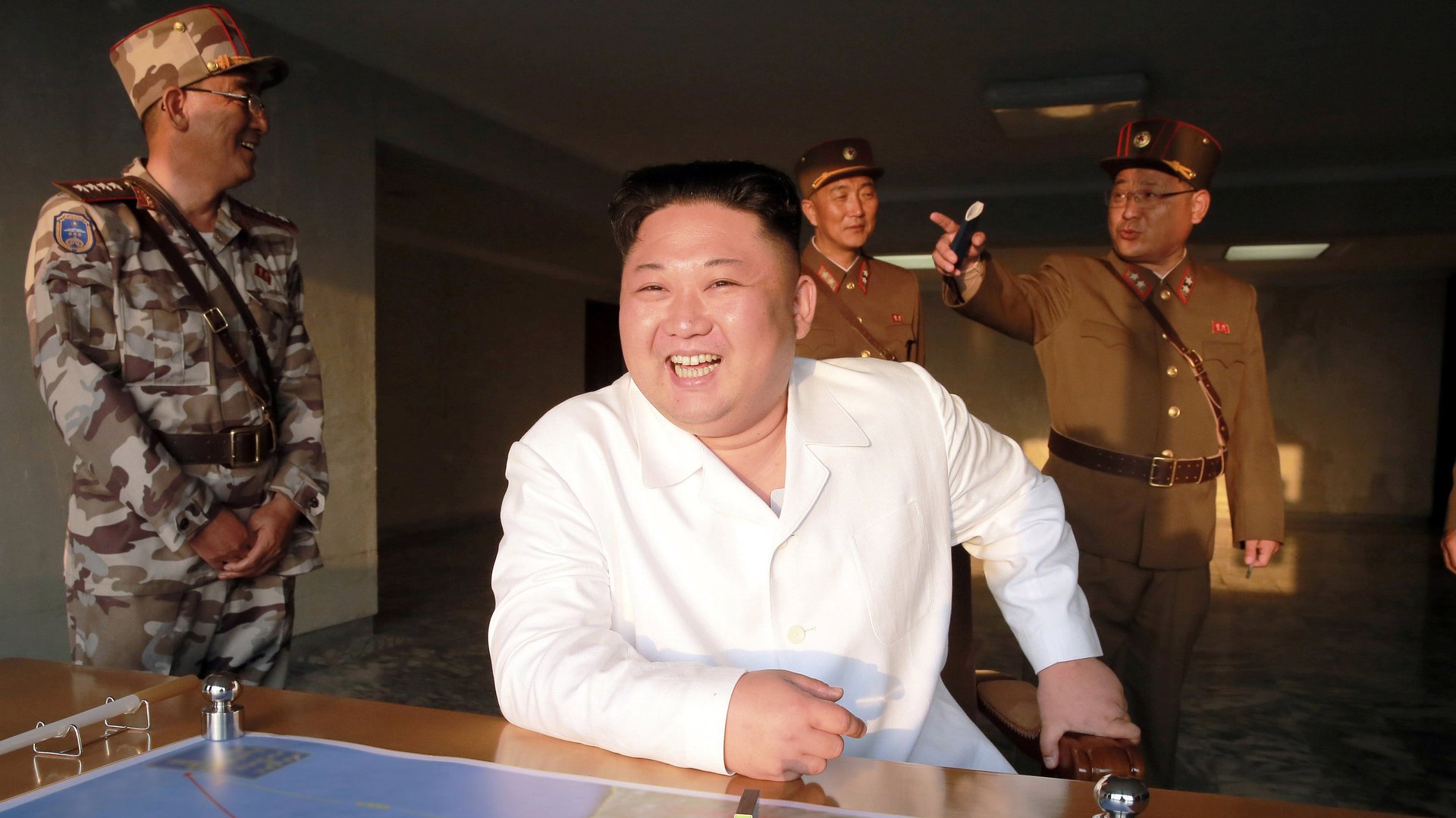North Korea’s hydrogen-bomb test statement, edited to be jargon free and easily understood
The following statement was provided by North Korea’s Nuclear Weapons Institute. We have edited it to be in plain English and added footnotes for more scientific details on the processes involved.


The following statement was provided by North Korea’s Nuclear Weapons Institute. We have edited it to be in plain English and added footnotes for more scientific details on the processes involved.
Nuclear scientists in the nuclear field of the Democratic People’s Republic of Korea (DPRK) successfully carried out a test of a hydrogen bomb (H-bomb) 1 for an intercontinental ballistic missile (ICBM) 2 in the northern nuclear test ground of the DPRK at 12:00 on September 3, true to the Workers’ Party of Korea’s plan for building a strategic nuclear force that would terrify the world.
The H-bomb test was carried out to examine and confirm the accuracy and credibility of the power control technology and internal structural design newly introduced into manufacturing H-bomb to be placed at the payload of the ICBM test a new design that would allow the H-bomb to be placed as an ICBM payload. 3
The result of the experimental measurements showed that the power specifications of nuclear warhead including total explosion power and fission to fusion power rate and all other physical specifications reflecting the qualitative level oftwo-stage thermo-nuclear weapon 4 test—involving a fission reaction that splits atoms to kickstart a fusion reaction that merges atoms—fully complied with design figures predictions. It was also confirmed that even though the recent test was carried out with the bomb of unprecedentedly big power, there were neither Sniffing machines 5 won’t work, because there were no emissions through the ground surface nor leakage of radioactive materials nor did it have any adverse impact on the surrounding ecological environment.
The test re-confirmed the precision of the compression technology and the fission chain reaction start control technology of the first system of the H-bomb and proved once again that the nuclear material utility rate in the first system and the second system reached the levels reflected in the design. The test shows that the new design increases the fuel used by the bomb. 6
Symmetrical compression of nuclear charge, its fission detonation and high-temperature nuclear fusion ignition, and the ensuing rapidly boosting fission-fusion reactions, which are key technologies for enhancing the nuclear fusion power of the second-system of the H-bomb, were confirmed to have been realized on a high level. The fusion reaction requires that bomb fuel be held at extremely high temperature and pressure, like the conditions that exist inside the sun. This helped prove that the directional combination structure and multi-layer radiation explosion-proof structural design of the first system and the second system used for the manufacture of the H-bomb were very accurate and the light thermal radiation-resisting materials and neutron-resisting materials were rationally selected. The test confirmed that the fusion fuel could be held in place 7 using advanced materials and structural design, while a fission reaction created those extreme conditions.
The test helped draw the conclusion that the Korean-style analytic method and calculation programs for the complicated physical processes occurring in the first and second systems were put on the high level and that the engineering structure of the H-bomb as a nuclear warhead designed on the Juche basis including the structure of the nuclear charge of the second system was creditable.
The test confirmed that the DPRK has the technology to deploy advanced nuclear weapons that can pack a bigger bang in a smaller space, allowing them to be placed on long-distance missiles and adjust their destructive power.
The test once again confirmed the reliability of the concentration-type nuke detonation control system fully verified through a nuclear warhead detonation test and test-launches of various ballistic rockets.
The perfect success in the test of the H-bomb for ICBM It clearly proved that the Juche-based nukes of the DPRK have been put on a highly precise basis, the creditability of the operation of the nuclear warhead is fully guaranteed and the design and production technology of nuclear weapons of the DPRK has been put on a high level to adjust its destructive power in consideration of the targets and purposes the success of designing weapons using the Korean philosophy of self-reliance. It also marked a very significant occasion in attaining means the DPRK has attained the final goal of completing becoming a the state full nuclear force power.
The Central Committee the WPK extended warm congratulations to nuclear scientists and technicians in the nuclear field in the northern nuclear test ground on their successful H-bomb test for ICBM.